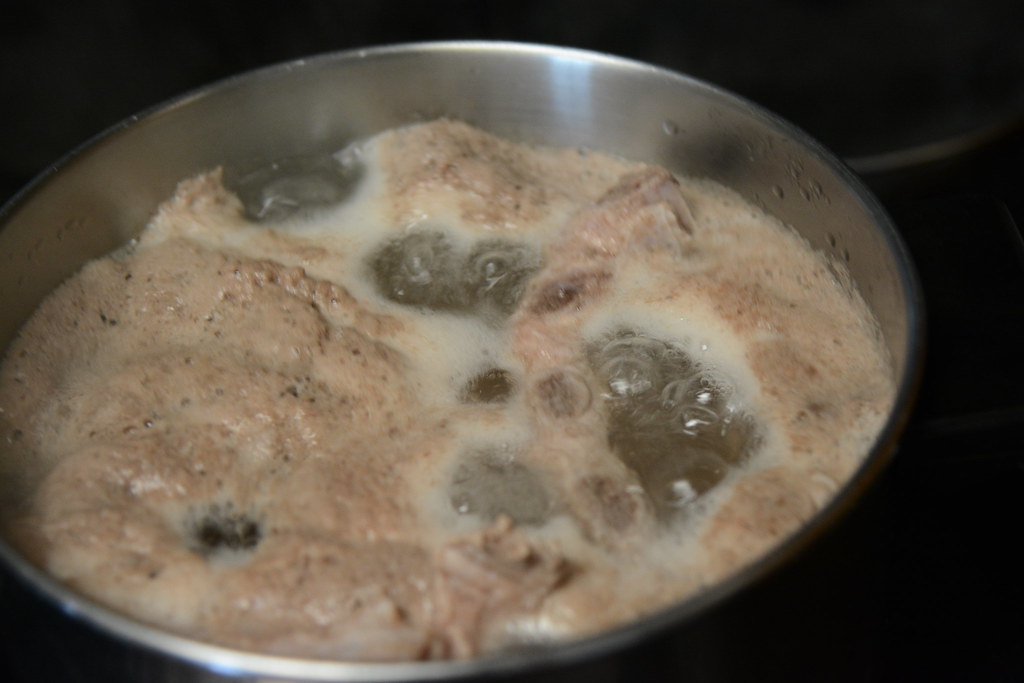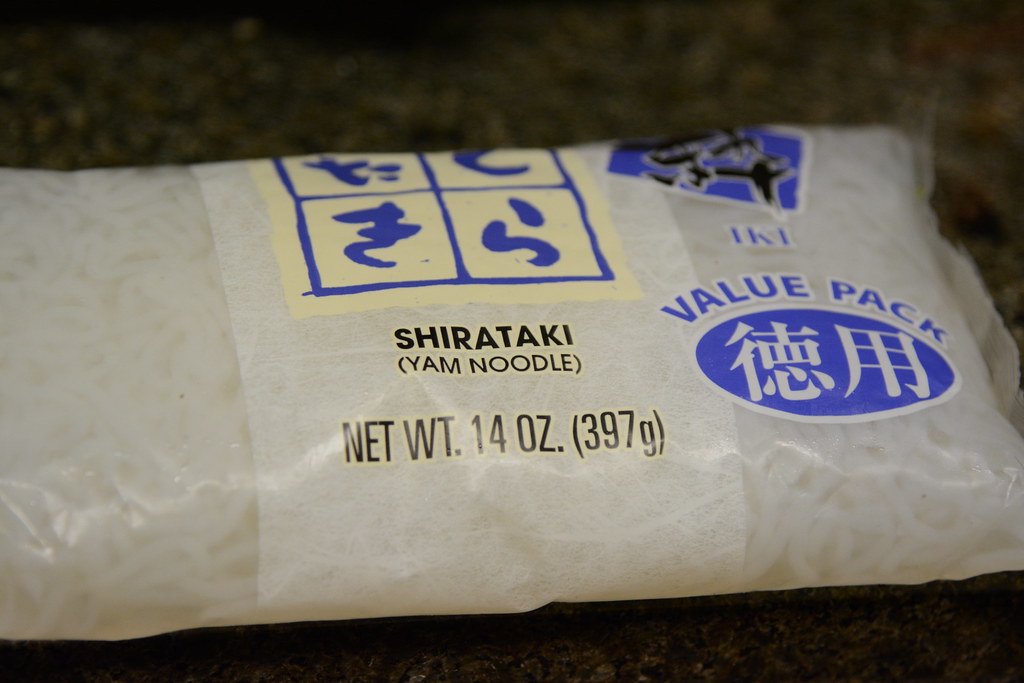A year ago, I kept hearing my friends talk about crack noodles. "Oh my god, they're so good, it's like crack! It comes with this sauce, crack sauce, it's like crack." First, how do they know what crack is like? Second, how the hell do I order crack noodles at a Viet restaurant? "Cô cho cháu một tô crack noodle."
Much to my surprise, crack noodles is just hu tieu nam vang, a Vietnamese take on a Cambodian dish (we do share a border). My sister makes it all the time, and won't she be surprised when she hears what my friends call it.
Hu tieu is a pretty versatile dish and can be made in tons of different configurations (including my personal favorite, hu tieu sate.) It differs from pho in that it's usually made with a pork broth and contains seafood. The noodles can be the exact same as pho noodles, or much wider ho fun noodles, and sometimes even clear tapioca noodles. My sister's version is eaten dry, served with a sweet soy sauce mixture (crack sauce) and a bowl of broth on the side. You can also eat this with the broth in the bowl and omit the crack sauce if you'd prefer.
I'd also like to talk about my new favorite kitchen tool, my pressure cooker. Amy bought me one after I scraped her in our gym competition, and I've used it more times in the last month than I can count. People talk about a crock pot being the real convenience tool, nah brah, get yourself a pressure cooker. A pressure cooker allows you to cook things in a fraction of the time of standard methods, so if you're short for time, or you suck at planning ahead, a pressure cooker will change yo' life! I was able to make pho in an hour, when it used to take 8. Amaze balls. Read more about it here.
Anyhow, onto the hu tieu! This is a little involved, but worth it.
Hu Tieu Nam Vang (Makes 6-8 servings)
Broth
2 lb Pork Spare Ribs
2 Tbsp dried shrimp
1 Large onion
1 oz rock sugar
1 tbsp salt
4 quart water or crab stock
1 tbsp nuoc mam
1 tsp soy sauce
Crack Sauce
1/4 cup soy sauce
1/4 cup sugar
1 tbsp sesame oil
1 tbsp fried shallots
1 green onion stalk
Toppings
Shrimp (3 per person)
Squid (1-2 per person depending on size)
Char siu
Chinese celery
Bean sprouts
Green onions (diced)
Fried shallots
Noodles of your choice.
1. Soak dried shrimp in hot water for 15 minutes, then drain the shrimp. In a small pot, add the spare ribs and enough water to cover them and bring to a boil. Boil for 2-3 minutes to release all the gunk. Drain and rinse the pork carefully.
3. In the pressure cooker, add the parboiled pork, dried shrimp, sugar, salt, fish sauce, soy sauce, onion and the water or crab stock. Turn the heat on high and once it comes to pressure, turn the heat down to low. Cook on low for 30 minutes.
4. Allow the pot to depressurize before opening and taste for final seasoning.
5. Turn the heat to high and poach the shrimp and squid until cooked through (about 3-4 minutes)
6. Cook the noodles as per package instructions, then assemble your bowls! Add a few slices of char siu and a few pieces of spare rib, poached shrimp and squid, green onion, bean sprouts, Chinese celery, and fried shallots. If eating it wet, ladle the broth into the bowls, if dry, ladle out a small bowl of broth on the side and serve with a small bowl of crack sauce.
7. To make crack sauce, combine all the sauce ingredients and cook for 2-3 minutes until the sugar dissolves and sauce slightly thickens.
Addendum: Shirataki Noodles
In an effort to eat healthier and get dat #CoachellaBody, I've been replacing high calorie and high carb noodles with these shirataki noodles. They're made out of yams and have a very similar taste and texture to rice noodles, but with zero calories and zero carbs. It's god damn magic I tell ya.
To prep these noodles, drain and rinse the noodles under running water to remove the weird liquid they're packaged in. Then, in a dry non stick skillet, dry fry them for 3-4 minutes. This dries them out a bit and allows them to better absorb whatever broth or sauce you eat them with.






No comments:
Post a Comment